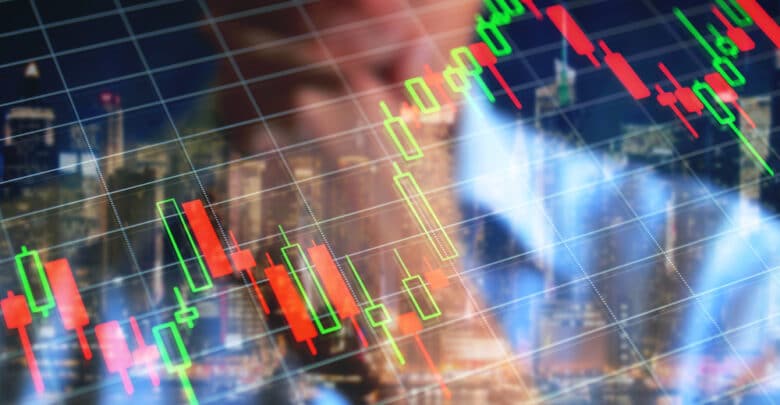Technical Analysis Vs Fundamental Analysis: All You Need To Know

Whenever it refers to analyzing the financial sector, especially the cryptocurrency space, technical analysis, and fundamental analysis are the two prominent areas of opinion. The technical analysis uses this information to examine an asset’s market movements and attempt to forecast future price fluctuations. Conversely, the fundamental analysis examines the economic and financial issues that drive a particular asset. Let us get into the specifics about how these two approaches vary and which one is better.
The d between fundamental and technical analysis is a point of discussion. Supporters of one type of analysis frequently criticize the other, but they miss that they both may be helpful. Technical analysis is better for short-term trading and market efficiency, whereas fundamental analysis is better for long-term investing. Both may be used in tandem to design and implement medium- and lengthy investments.
Short-term price swings are influenced by demand and supply, which is much more than what is generally considered in fundamental research. Only price movement data may be used to study market mood and the impact on market behavior. On the other side, charts cannot be used to identify if an asset is undervalued or overpriced or what its potential worth could be.
Many traders can get phrases of technical and fundamental analysis mixed up or even misused.
Fundamental analysis attempts to generate educated guesses about assets working capital depending on how the market will behave. This gives the trader a sense of how valuable the company/assets are.
On the other side, the technical analysis examines internal market information such as value and volume of transactions. Technical analysis aims to detect trends that will reoccur for the trader to profit from them.
What is Fundamental Analysis?
Most traders who wish to make long-term investing selections begin with a fundamental examination of a firm, single assets, or the entire marketplace. Fundamental analysis involves the study of assessing all components of a product or marketplace in order to determine a security’s intrinsic value. Non – monetary assets like copyrights, patents, logos, and proprietary information are evaluated alongside physical resources such as real estate, equipment, and buildings owned by a company.
To undertake a systematic study, analyze a company’s financial records, historical information, trader teleconferencing, news announcements, research reports, and analysts’ projections. Traders employ fundamental analysis to examine financial aspects such as the general stability and certain sector circumstances while examining the broader spectrum of the assets marketplace.
Fundamental analysis assigns a valuation to the securities under consideration, which is then contrasted to the asset’s current market worth. Traders use the comparisons to decide if a long-term investment is cheap or overpriced and whether this is worth purchasing or selling.
Traders use fundamental analysis to boost the effectiveness of their portfolios. Analysts and traders typically carry out fundamental analyses in order to provide guidance to traders. Recognizing assets that are not appropriately valued helps a trader buy assets, avoid buying overpriced assets, and sell expensive equities that the buyer owns. Fundamental analysis is also most beneficial to long-term traders, although short-term traders may also use it to improve their portfolios.
Analysts use fundamental analysis when they make suggestions to traders, but marketplaces see the most activity when firms issue their earnings. Firms can provide these statements publicly any time but usually do so between two weeks after every quarterly.
The Importance and Advantages of Fundamental Analysis
A fundamental study of a firm can help you determine its asset’s fair market value, which is often unavailable. It is frequently overvalued or undervalued.
Fundamental analysis aids in the prediction of long-term market movements. It’s often utilized for long-term investing since it helps you determine the price of the asset. It also allows you to find solid investment opportunities, including those with significant growth opportunities.
Furthermore, the analysis aids in one of the most critical yet intangible characteristics – trading experience, which is extremely useful in investment research since it may provide insight into the future of the asset.
The premium to fair market value at which equities are traded can be used to minimize portfolio risk. Asset diversification considerations can then be made to minimize a portfolio’s potential damage. Accurate traders frequently realize the highest profits while the rest of the market is incorrect. This is only possible through essential examination. Furthermore, judgments based on fundamental analysis have a better possibility of being accurate, especially over the long run.
Technical Analysis
Technical analysis examines and forecasts future values using data such as price fluctuations, graphs, patterns, trading volume, and other elements. As opposed to fundamental analysis, the technical analysis concentrates on trading signals to identify attractive investments and market opportunities by analyzing an investment’s tendencies using trade data and other analytical aspects.
Generally, the technical analysis considers a security’s present or previous value to be the most significant predictor of its future price. Technical analysis uses financial charting, statistics, and facts to identify an investment’s positives and negatives and anticipate trends to assist analysts and traders in determining whether an asset is profitable or not and what is the correct action.
Since technical analysis emphasizes pricing, movements, volumes, and patterns, technical analysts examine numerous essential characteristics and indicators instead of financial statements, which fundamental analysts examine.
One of the most significant benefits of technical analysis is the ability to assess equities fast. Some chores can also be done, which makes life easier. This implies that a technical analyst may analyze more assets and generate suggestions from a broader universe. Technical analysis may also determine price objectives and levels at which a notion is incorrect. This enables traders to develop investing strategies with well-defined risk and return profiles.
Price behavior is influenced by various factors that fundamental analysis cannot detect in the short term. Studying charts allows you to see the influences of market mood, market psychology, and supply and demand. Technical analysis can be used to enhance timing and to trade market-appropriate tactics.
It might help you enhance your hedging techniques by enhancing your timeframe when selling or purchasing alternatives. A chart can immediately show if an asset’s price is in a trading range or a pattern. Some technological strategies can be evaluated in the past. This implies they can be examined and implemented professionally. Many algorithmic trading methods are based on methods that can be reverse-checked.
Here are some of the fundamentals of technical analysis and how they apply to market research.
- Price
The asset price is one of the essential criteria that technical analysts consider. Price movement is the most critical factor to analyze when it comes to technical analysis. Technical analysts examine charts that illustrate its prices and trade volume to evaluate a security’s previous achievements and anticipate future moves. The primary goal of utilizing charts to analyze equities or other assets is to identify patterns in the price or trade volumes of the asset and how specific patterns change over the years.
According to technical research, traders’ behaviors and perceptions are the significant drivers of asset prices across the board. Trading conditions are also significant predictors of how prices may move and alter in the future due to their changing nature.
- Analysis of Chart Patterns
Chart patterns, which are the heart and soul of technical analysis, are among the most common methods analysts study and anticipate where a company or asset will trend in the future.
A trend line depicts a security’s relative price pattern, which is among the most significant aspects of charts for technical analysis. Furthermore, tools like “peak/trough analysis” and “rolling average” can aid market participants in predicting how assets will perform.
While charts appear to be technical, they are really focused on charting and visualizing trader emotions and marketplace psychological dynamics by presenting price movements over time. Technical analysts look at a variety of charts, such as candlestick charts, line charts, bar charts, and much more.
- Volume
Volume is yet another essential component in technical analysis. The amount of shares or agreements that exchange for particular securities during a specified period of time, usually a day, is known as volume.
Checking assets’ or security volumes can assist analysts in estimating the magnitude of market movements or patterns by displaying the number of shares moved in that proportion. A bar chart at the end of a finance chart represents volume underneath the price line. The trade volume is proportional to the height of the bar.
Volume may assist validate chart patterns like the triangle or head-and-shoulders patterns and affect verify or illustrate the intensity of trends and price fluctuations.
- Trend
The trend is possibly among the most critical indicators of an asset’s or security’s performance outcomes for a technical analyst. The technical analysis places a premium on analyzing previous patterns in order to tell how much the value of bitcoin will increase in the future. As a result, human behavior and sentiments play an unexpectedly important part in technical analysis, as initial trading conditions and price fluctuations often predict how the assets or commodity will act in the future.
There are a variety of styles, some of which have unusual names like “triangles” and “head and shoulders.” (There are also “rectangles,” “cup and handle,” “flags and pennants,” “candlesticks,” and other designs. “Uptrends,” “downtrends,” and “horizontal” trends are the three main kinds of trends. Higher lows and higher highs indicate uptrends, whereas lower lows and lower highs characterize downtrends. While you may get entangled in the details of every trend, generally, trends describe the broader movement of a company’s equity, including its up and downs.
Furthermore, analysts utilize several durations of trends to evaluate data, the most popular of which are “short term,” “midterm,” and “long term.
- Momentum
Momentum refers to the rate at which a commodity’s or security’s price moves or fluctuates. Momentum is a term frequently used in conjunction with the “relative strength index” (RSI) to track and quantify the rate at which prices grow or drop over a particular timeframe. The RSI provides assets ranging from 0 to 100 and records whether the market is overvalued or oversold for those particular assets. It is usually checked on a regular basis.
The Top Technical Indicators for Cryptocurrency and Stocks
These are some of the top technical indicators for trading cryptocurrencies and equities.
- On-Balance Volumes
This is among the fundamental indicators that forecast the price of an asset based on its fluctuating trading volume.
- Distribution Line
This indicator is used to track the inflow and outflow of funds inside a marketplace.
- ADX
This indicator evaluates an asset’s market forces to identify the intensity of the market’s current price movements.
- Aroon Indicator
The Aroon Indicator is being used to measure the stability of a pattern and variations in the price fluctuations of an asset.
- Moving Average Convergence Divergence
Traders and investors use this indicator to analyze an asset’s price movement.
- Exponential Moving Average
The Exponential Moving Average is a variant of the moving average indicators used to calculate selling and buying signals for traders and investors by calculating the average periodical price changes.
- Relative Strength Index
This technical indicator evaluates the size of current price fluctuations to identify if an asset is overvalued or oversold.
- Stochastic Oscillator
The Stochastic Oscillator is an indicator that indicates extreme and stressed market circumstances.
Difference between Fundamental Analysis and Technical Analysis
Fundamental analysis looks at financials, profits, payouts, and other indicators, whereas technical analysis focuses on charts and price movements. Fundamental analysts consider price changes tied to everything relating to the firm profits, rival activities, and news.
Assume Tesla receives a 100,000-unit contract from a renting-car firm. That’s encouraging news, and sales will likely rise as a consequence. According to fundamental research, the assets are anticipated to grow. As an alternative, suppose Tesla spontaneously catches fire or is engaged in a mishap while on autopilot. That is terrible news, and it is likely to cause a drop in the assets price.
Long-term price fluctuation assessments show that such news headlines are short-lived and confined. In reality, in many instances, technical analysts do not understand what a firm does since they are just interested in the price movement of the firm’s assets.”
Technical analysis is based on facts, but fundamental research nearly always works with expectations, and the future is never definite.
Many analysts stand by technical analysis that has been operating for more than generations. You can sign in immediately and begin examining charts for trends and patterns; however, while rapid and practical technical analysis has restrictions, all approaches do. Creating a singular point of view may be difficult with so many different analytical methodologies, indications, and timescales to consider.
While fundamental research is preferable for long-term investing, the technical analysis might be more beneficial in the near term.
Which one is Better, Fundamental Analysis or Technical Analysis?
The discussion about the difference between fundamental and technical analysis is intense. Supporters of either type of analysis frequently dismiss the alternatives, but they don’t realize they may both have a role. Fundamental analysis is best suited for long-term investing, but technical analysis is better suited for brief trading and market timing. Both could also be used to execute the planned medium or long initiatives.
Short-term price swings are governed by market forces, which are influenced by much more than what is generally considered in fundamental analysis. Only price movement data and volume may be used to study market mood and the impact of emotion on market behavior. On the other hand, charts cannot be used to identify whether an asset is under or overpriced or what its worth could be in the future. Charts illustrate what has happened previously, and their usefulness decreases as the period lengthens.
Can They Exist Together?
Technical and fundamental analysis are typically considered opposed methodologies for examining assets, but some traders have succeeded by mixing and matching. A trader, for example, may utilize fundamental research to discover inexpensive assets and technical analysis to determine a particular entry/exit position. Usually, this pairing works best when a security is grossly overvalued, and joining the position too soon might be detrimental.
However, some primarily technical traders will examine fundamentals to back their trade. For instance, a trader would be looking for a breakout around financial results and analyzing the fundamentals to see if the assets are likely to beat expectations.
Conclusion
Fundamental analysis has been most commonly used to determine the quality of long-term investment in a broad range of asset classes and markets. In contrast, technical analysis is more commonly used to examine short-term investments such as proactive trades. Traders employ quantitative research to assess a company’s financial soundness. Fundamental analysis is used to assess assets by calculating their inherent worth. Technical analysis varies from fundamental analysis in that traders search for aggregate statistics in the volume and price of an asset.
Both strategies are used to investigate and anticipate future stock price movements. While some investors seek to examine long-term investment using a single research approach, a combo of fundamentals, technical, and quantitative methods is the most advantageous.
Tokenhell produces content exposure for over 5,000 crypto companies and you can be one of them too! Contact at info@tokenhell.com if you have any questions. Cryptocurrencies are highly volatile, conduct your own research before making any investment decisions. Some of the posts on this website are guest posts or paid posts that are not written by Tokenhell authors (namely Crypto Cable , Sponsored Articles and Press Release content) and the views expressed in these types of posts do not reflect the views of this website. Tokenhell is not responsible for the content, accuracy, quality, advertising, products or any other content or banners (ad space) posted on the site. Read full terms and conditions / disclaimer.







